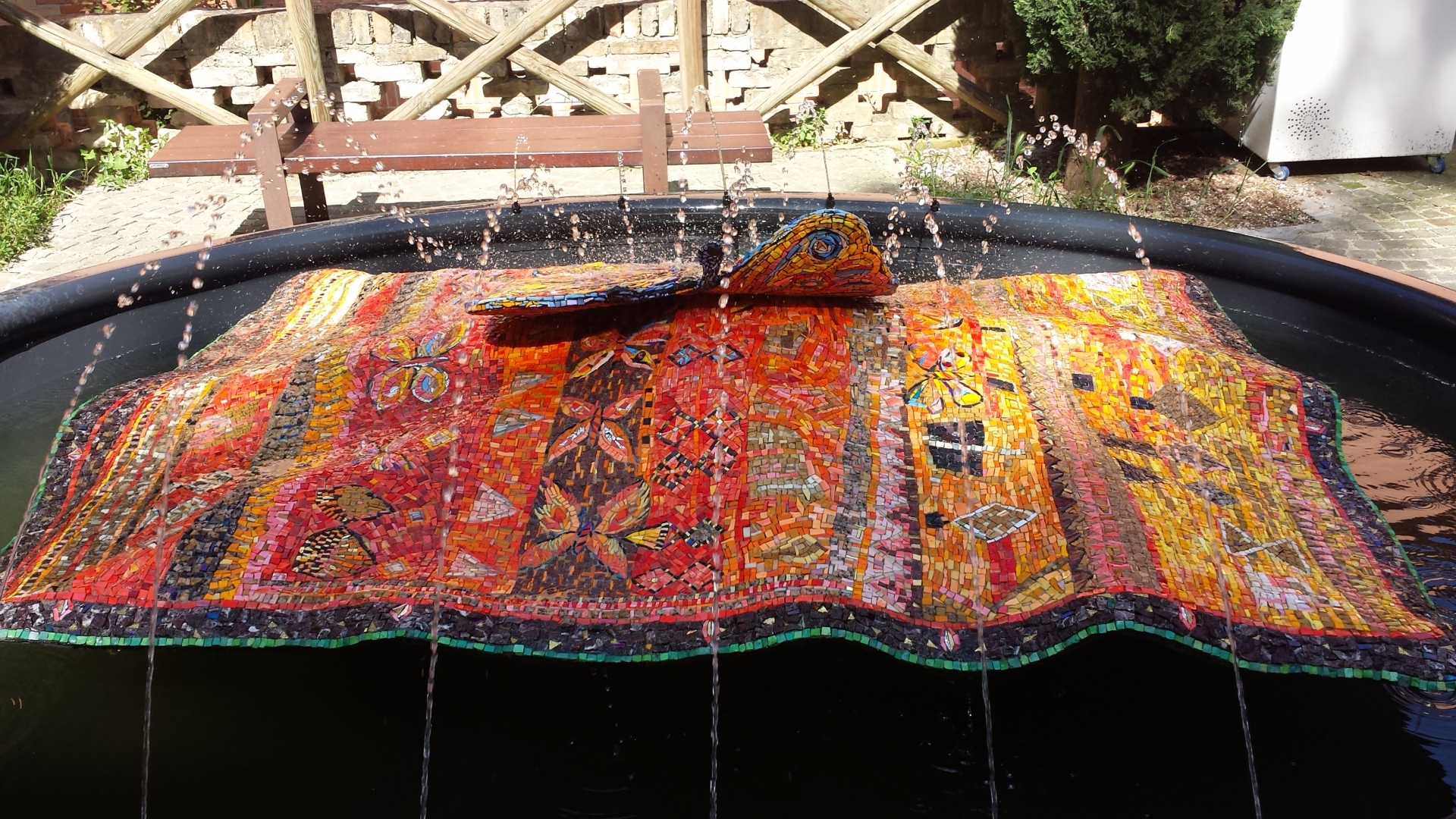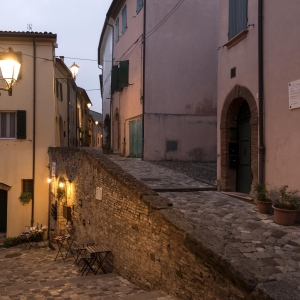Hamlet of Santarcangelo
The hamlet of Santarcangelo is nestled on a softly rolling hill called Colle Giove; still today, the typical structure of the medieval fortified hamlet is clearly recognizable here. The Middle Ages left an indelible mark on the upper districts of the historic center, dominated by the solid Rocca, a strategic fortress over the surrounding plain.
This hamlet - considered one of the most captivating in Romagna - gave birth to a series of intellectuals and artists, yesterday as well as today, like no other place in the province, figures that include a Pope, Clement XIV, Ganganelli, as commemorated by some monuments dedicated to him.
Here art, culture, history and traditions are part of life itself, you can feel this atmosphere in its squares, in its picturesque corners and in the many events that mark the seasons, which have also become tourist attractions.
Its painstakingly renovated historical center, where the special attention that was given can be seen in the preservation of the signs of the past; thanks also to the numerous restaurants and inns, it is more alive than ever.
Santarcangolo Hamlet opens its doors to encounters, it is synonymous with hospitality and its strong cultural identity is felt everywhere.
But it is also capable of being modern in its ways, keeping itself up-to-date, meeting the challenges of the future.
Proof of this is its Theater Festival held in the square which 40 years ago brought the new cultural ferments of the post-1968 era here, recording but reworking them, and it has always gone hand in hand with international social and cultural evolutions. In the same way, it has been able to modernize its very ancient fairs, updating tradition and folklore until it made them modern events linked to natural products and food and wine peculiarities.
What is there to see once you enter this beautiful hamlet?
The choice abounds... here are some suggestions.
The 19th-century Bell Tower, although it is not the original one, was at the top of the oldest access to the first fortification (Gate of the Old Bell Tower 11th-2th century), and it still remains one of the symbols of the town and an unmistakable part of its skyline. Continuing our walk, we come across Piazza delle Monache, one of the prettiest medieval squares overlooked by prestigious buildings, with a rare vintage well and access to one of the most beautiful caves.
Do not miss the Tuff Caves which you can visit only by reservation. The historic center stands on a network of mysterious hypogea inside of which circular spaces, tunnels, wells, walkways, of considerable architectural value have been carved out.
Under the entire Hill there are more than two hundred caves, all registered with the land office. Despite careful investigation, their origin or function is still unknown, and the hypotheses are countless; it is certain, however, that they make up a fascinating underground town.
Finally, the Ancient 17th-century Mangle of the Stamperia Marchi is well worth a visit; it is an extraordinary 17th-century example of a wheel printing press for ironing fabrics, in perfect working order. In the adjacent workshop, hand-painted fabrics are produced in the traditional way with the ancient technique of "rust printing".
A bit of history
The history of Santarcangelo boasts the first settlements of the Roman era which were followed by the foundation of Ariminum, around 268 BC. and in its countryside centuriation was practiced, while the area became rich in kilns.
Emilia, the consular Road, which still goes through it today, has always favored its trade and given the impetus for its transformation into a center of exchanges and meetings, a characteristic which it has never lost and which still makes it a destination of regular customers, visitors and tourists.
In the Middle Ages the town settlement was on the hill called Colle Giove, where the typical structure of a fortified hamlet is still clearly recognizable. A harmonious and elegant historic center dominated by the Rocca of the Malatestas, a family who ruled here beginning in the 13th century, even if the fortification existed before that time. The lords of Rimini enlarged and embellished it, and today's Fortress is the result of their reconstructive work.
Between the 1600s and the 1800s the hamlet expanded while maintaining a good urban harmony. Aristocratic buildings together with working-class ones, in a well-integrated harmony, creating everything that today makes the town beautiful, attractive and interesting.
In 1828 it was awarded the status of City and in 1984 it was awarded the title “City of Art”: it is truly that both in name and in fact, more than ever devoted to offering a good welcome.
Ghost and legends
Santarcangelo is home to the MET Museum of the uses and customs of the people of Romagna.
It is one of the main national museums dedicated to popular traditions. Organized on a modern key, it presents finds and documents divided into thematic sections, such as the cycle of wheat and wine, the mill, printing on canvas, clothing, trades, the home, transportation, the art of making stringed instruments, puppets and much more.
This town, too, was touched by the hand of Tonino Guerra, with the Fontana del Prato Sommerso (The Submerged Meadow Fountain).
The fountain, designed by Tonino Guerra, the eclectic poet and artist from Santarcangelo, offers cool water with poetic charm. The same can be said of his works and installations present in various places in the town, defined as “Places of the Soul”, which create a path that is an absolute must-do for its beauty and originality.
Last but not least, Santarcangelo offers a small gem of originality and beauty: the Button Museum with a collection of 8,500 buttons by Giorgio Gavallotti. Entering the Button Museum is a journey through time, through history, through the uses and customs of man with very ancient finds, some invaluable because they belonged to popes, others even more extraordinary because they were in space.


